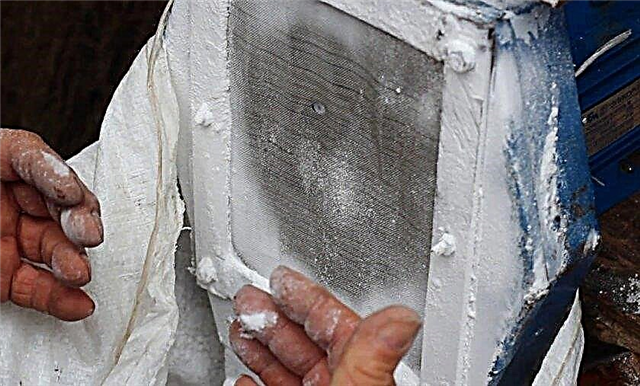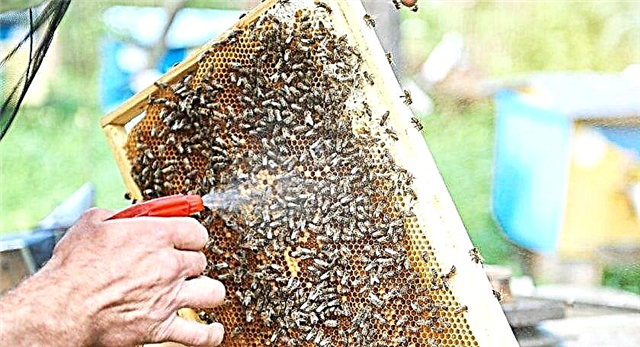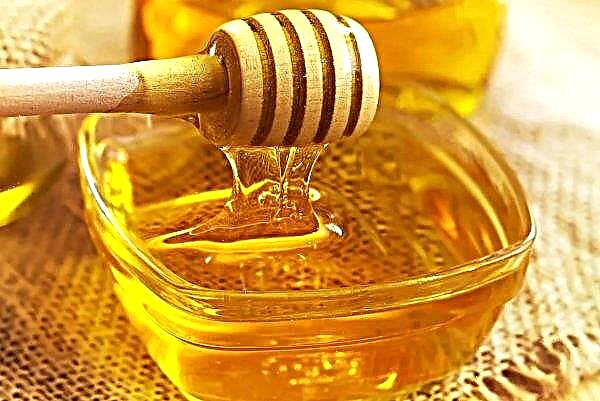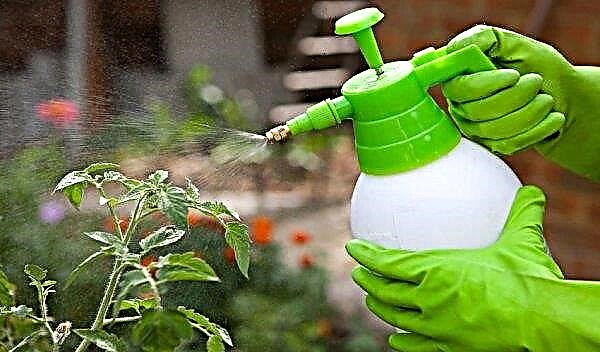The health and livelihoods of bees are affected not only by climatic conditions, but also by various diseases to which insects are susceptible. They cause irreparable damage to beekeepers in the form of extermination of entire families or in a significant reduction in their number. To avoid such consequences, apiary owners resort to special medications that eliminate the problem. About what medicines can be given to bees and for what diseases - we will consider in the next review.
What medications can be given to bees
Like all insects, bees can be infected with infectious, viral or fungal diseases. The main task of the beekeeper is the timely detection of the disease and the conduct of all necessary measures aimed at saving bee families.
Important! Beekeepers recommend not using the same drug for more than 3 years, since parasites are able to get used to the active substance, and it becomes ineffective.
From varroatosis
Varroatosis is a disease caused by female varroa parasites brought from India and the Primorsky Territory. These pests up to 1 mm in size have 4 pairs of legs and a sucking apparatus with which they feed. Parasites suck out hemolymph from adult bee individuals, are also carriers of viral, bacterial and fungal diseases. They pose a serious threat to the bee swarm, because as a result of their vital activity, it can die. That is why it is necessary to constantly monitor the health status of bee colonies, conducting diagnostics and prevention. In the event of varroatosis, you should use special drugs aimed at treating this disease. These include:
They pose a serious threat to the bee swarm, because as a result of their vital activity, it can die. That is why it is necessary to constantly monitor the health status of bee colonies, conducting diagnostics and prevention. In the event of varroatosis, you should use special drugs aimed at treating this disease. These include:
- "Apistan";
- Varotom;
- Apifit;
- Fumisan
- “Varostop”;
- Bayvarol;
- Apiprotect;
- "Pericin";
- "Bipin";
- Varroadez
- "Tactician";
- "Warropol".
Did you know? One medium bee swarm can weigh up to 8 kg.
From acarapidosis
Acarapidosis is a very dangerous disease that develops slowly and is diagnosed late. It is caused by acarapis woody ticks. These parasites live in the trachea of bees or at the base of the wings, feeding on hemolymph and releasing harmful toxins. They spread, passing from one individual to another (by contact). The consequences of acarapidosis are paralysis of the respiratory organs of infected insects and their death. Signs of the disease include the fact that sick bees crawl near the hive, bounce and gather in groups, their wings are in an inverted state. Acarapidosis in bees: 1 - trachea of a healthy bee; 2 - trachea in the initial stage of the lesion; 3 - severely affected trachea; 4 - bee disclosure
Acarapidosis in bees: 1 - trachea of a healthy bee; 2 - trachea in the initial stage of the lesion; 3 - severely affected trachea; 4 - bee disclosure
The essence of the treatment of acarapidosis is to destroy infected individuals by fumigating with medicinal gaseous preparations, such as:
- "Ant";
- "TEDA";
- "Akarasan";
- "Polysan";
- Varroadez
- "Bipin".
Did you know? The queen bee will not sting a person, even if it is very irritated.
From nosematosis
Another dangerous disease is nosematosis caused by a nozema parasite. This pest lives in the midgut of insects. You can recognize infection with nosematosis by the following signs: the bees behave uneasily, defecate on the walls of the hive, the nests are contaminated. The parasite infects workers, drones, the uterus. The number of bee colonies is significantly reduced. You can determine the disease using laboratory diagnosis.
The treatment of this disease is carried out using such means as:
- Fumagilin-B;
- Metronidazole
- Fumagol;
- Ascocin.
From ascospherosis and aspergillosis
Ascospherosis and aspergillosis are diseases caused by fungi, affecting mainly bee brood. Infection occurs through nectar and pollen, as a result of which the larvae die in 2–4 days. Infected ascospherosis and dead larvae become covered with white mold. With aspergillosis, the dead brood is covered with gray mold, wrinkles and hardens.
To treat these diseases, drugs are used:
- Asko-gel;
- Mikoask
- "Miconazole";
- Asconazole;
- "Askovet";
- Unisan.
Important! If diseases occur in bees, it is necessary to quarantine and disinfect the hive in which the sick insects were.
For the treatment of viral diseases
Today, about 20 viral diseases of bees are known: wing deformity virus, bag-brood virus, black liquor virus, kashmir-virus of bees, virus of acute or chronic paralysis of bees, etc. For proper treatment, beekeepers carry out diagnostics in laboratories, determining the pathogen. After that proceed directly to the use of drugs. At the same time, there can be several viruses in one apiary
At the same time, there can be several viruses in one apiary
Antiviral drugs include:
- "Endoglukin";
- Apimax;
- "Virusan";
- "Antivir";
- "Izatizon."
From rotten diseases
Another serious disease affecting bee larvae is rotten. They are characterized by the fact that the dead brood turns into a putrefactive mass. The beekeepers don’t notice this problem right away, because insects clean the honeycombs, in which the uterus lays new eggs. Dead larvae have a dull appearance, later acquire a brown color and dry up. All this is accompanied by an unpleasant odor.
The drugs used for rotten diseases include:
- "Bacto-gel";
- "Oksivit";
- "Tetracycline";
- "Erythromycin."
Rules for feeding medicines to bees
In order to grow strong families and get a good collection of honey, it is recommended to feed the medicines (for treatment and prevention) to bees in the spring. It is carried out in several ways:
- Syrup Feeding - It is used mainly for sulfa drugs and antibiotics. Suitable for small families living in a single-hive hive, when sending bees in bags or when using Fumagillin. This method does not guarantee the complete eradication of the disease.

- Pollination with medicines mixed with powdered sugar, - the least time consuming way. The upper trims of the frames are pollinated. It gives a greater effect than when using syrup. Although it is impossible to establish what dose of medicine each insect received.

- Spraying insects with syrup with a medicine is the most effective way. Wet bees do not fly out of the hive, they cleanse each other, swallowing the drug. The product is distributed completely throughout the brood hull.

Precautions when using drugs for bees
To cause minimal damage to bee families, during their treatment for the disease, precautions should be taken when using drugs, namely:
- buy only quality products from trusted suppliers, avoiding fakes;
- Strictly follow the instructions for each medicine, adhering to the right doses, rules of delivery, time of treatment, etc.
- precisely adhere to the required air temperature for processing hives with one or another means;
- when working with chemicals, the beekeeper should be protected from contact with the skin of the hands, face, and respiratory system;
- After finishing work with the preparations, it is necessary to thoroughly wash your hands and face, gargle.
Contraindicated preparations
- The most dangerous for bees are neonicotinoid-based pesticides. These include:
- "Borey" - 1st hazard class for insects (the most dangerous);
- "Kinfos" - 1st hazard class;
- “Drug 30 plus” - hazard class 3;
- “Euphoria” - 1st hazard class;
- “Faskord” - hazard class 2;
- Dexter - 1st hazard class.
Tips for beekeepers on treating bees
In order for the bee families to be healthy and bring quality honey, it is necessary to carry out a number of activities, consisting in the following:
- Ensure proper feeding and keeping of insects.
- Timely diagnose diseases and prevent them.
- Stick to personal hygiene, as bees do not like any pungent odors and become aggressive.
- Keep hives in the apiary clean. If necessary, disinfect them.
 Any disease of bees leads to the fact that the whole bee family or most of it dies, so it is necessary to approach the issue of prevention with great responsibility, which will help prevent negative consequences and save the swarm.
Any disease of bees leads to the fact that the whole bee family or most of it dies, so it is necessary to approach the issue of prevention with great responsibility, which will help prevent negative consequences and save the swarm.















